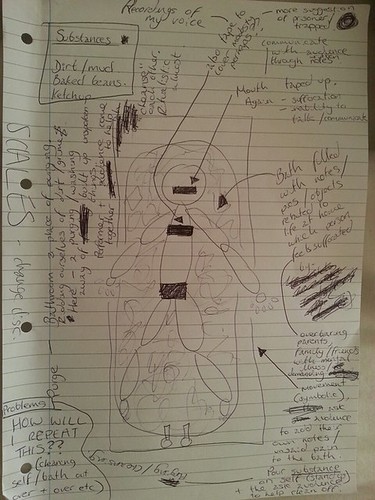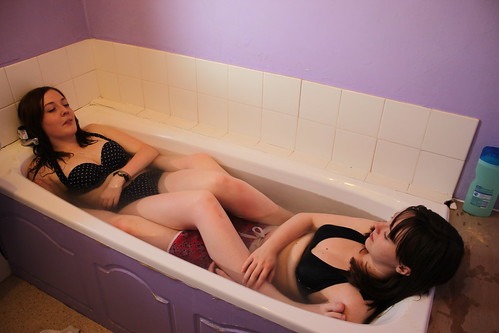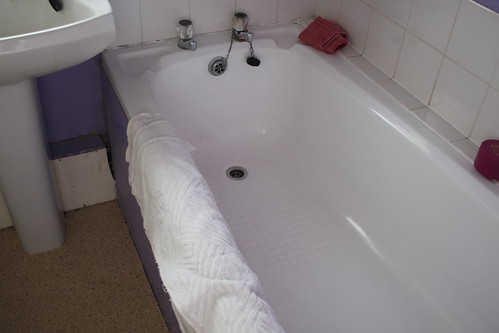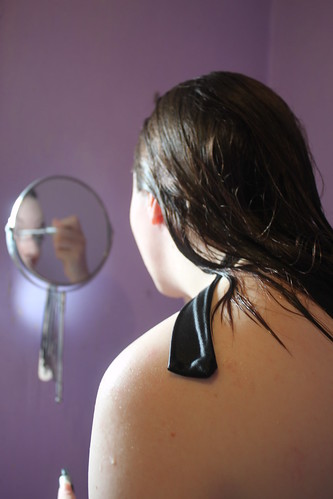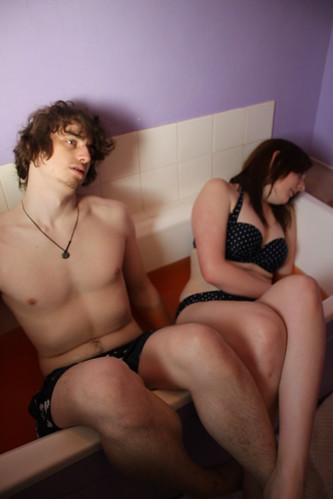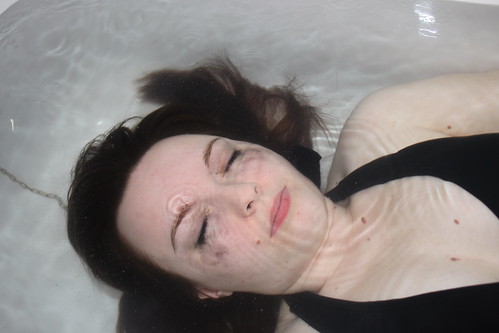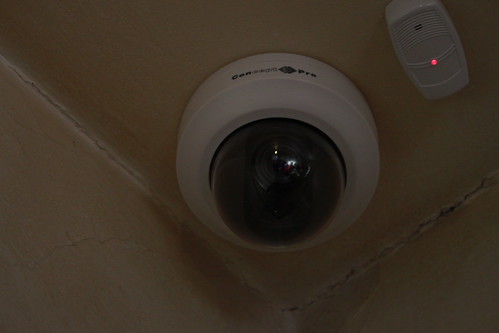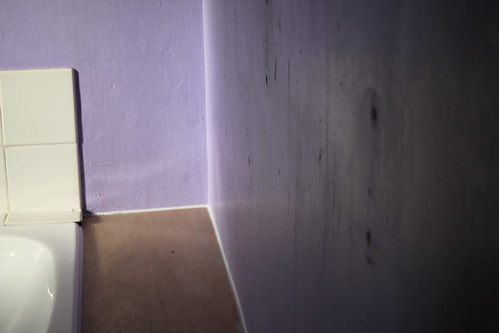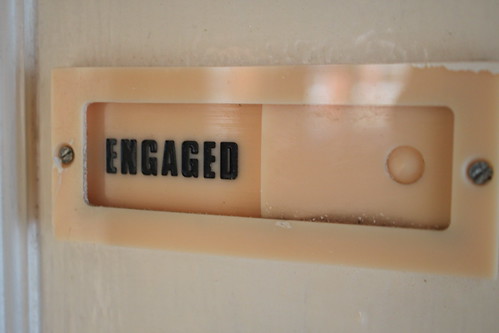
Photo taken 01/02/2013 by Jozey Wade
When I first set foot in the bathroom of our house, back in January, I wrote in my many scribblings of notes (some of which can be seen below) that I was drawn to it because of the privacy, safety and solitude attached to it. I don’t think, on that first day, I could have possibly imagined the journey I would go on in that small room. Not only in relation to what I would learn about bathrooms, but also – and more importantly – about human nature, and even myself.
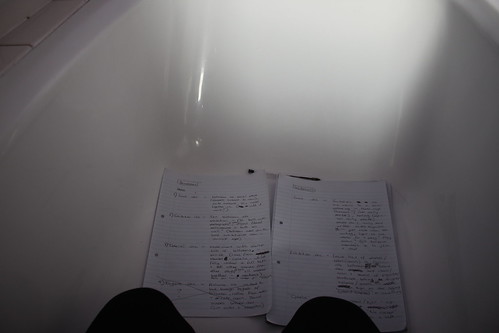
Photo taken 05/02/2013 by Jozey Wade
I spent a lot of time in the first stages of my process deliberating on what I could wear in the bath to cover my modesty and yet remain true to the site and performance. I did not want to wear clothes, just for the sake of being covered if t didn’t make any sense – of course, in the bath we are generally always naked. I came to the decision of being naked without much though of what it might mean for me and it was only once I started putting it into practice, particularly in front of others, that I began to find it difficult and feel uncomfortable about the prospect. “To be naked is to be deprived of our clothes and the word implies some of the embarrassment which most of us feel in that condition. The word nude, on the other hand, carries, in educated usage, no uncomfortable overtone.” ((Kountouriotis, P. (2009) ‘Nudity, nakedness, otherness and a “still difficult spectator”‘, Movement Research Performance Journal, (34), pp. 1-16.)) This is true. And at first, I felt like I was naked. Later on down the line, when I became accustomed to it, I then felt like I was nude. It has since occurred to me that what bothered me during those difficult few weeks of trying to be brave was not people judging my naked body, but people judging the fact that I was naked at all in front of them.
This is where it became interesting. People’s reactions to my performance in the bathroom were, initially, what worried me. However, it ended up being people’s reactions that made this piece so interesting and even important to me. In creating their participatory performance encounters, performance artist pair, Lone Twin are always “interested in considering what good could come from these encounters” ((Lavery, Carl & David Williams (2011) ‘Practising Participation A conversation with Lone Twin’, Performance
Research: A Journal of the Performing Arts, XVI(4), pp. 7-14)) and that really resonated with what I wanted from my performance. Rather than purely to shock people, I wanted them to feel reassured. I wanted them to come in, maybe expecting the worst based on what they saw, but then unexpectedly quite enjoy themselves and take something pleasant away from it. As Lone Twin said, “It’s good to dance with someone else, good to be friends with somebody else, good to walk with someone else” ((Lavery, Carl & David Williams (2011) ‘Practising Participation A conversation with Lone Twin’, Performance
Research: A Journal of the Performing Arts, XVI(4), pp. 7-14)) and that is what what performance was about – sharing.
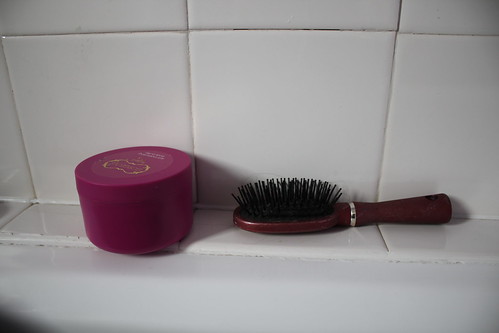 Photo taken 05/02/2013 by Jozey Wade
Photo taken 05/02/2013 by Jozey Wade
Even though I set up the bathroom to be as inviting as possible, with candles, bubbles, music and all sorts of bath lotions, some audience members that joined my company, naturally, enjoyed it more and felt more comfortable than others. For a couple of people specifically, the idea of being in a bathroom with a naked girl, being asked to “give me a hand” washing my back, seemed to be quite painful. Perhaps it was to do with past experience in their lives, or perhaps – like me some way through this process – they had yet to see how such an experience could be anything but bizzare and uncomfortable. Despite the fact that there were these couple of people who didn’t respond as I hoped them to, it surprisingly didn’t take away from the performance for me. Seeing how different people reacted was part of what made it interesting. Seeing the people who I perhaps expected to be uncomfortable chatting away to me and really getting involved, as much as the people I expected to be comfortable, really struggling with being in there at all. In addition, it’s worth noting that, even the people who didn’t “get” as much from the experience (and this was, as I said, only a couple) were in no way judgmental or rude – on the contrary they only commented on how they thought I was brave and how they could not do such a thing themselves. As my final audience member put so eloquently during his visit – “It makes you realise that not that many people are actually dicks!” and this could not be more true.
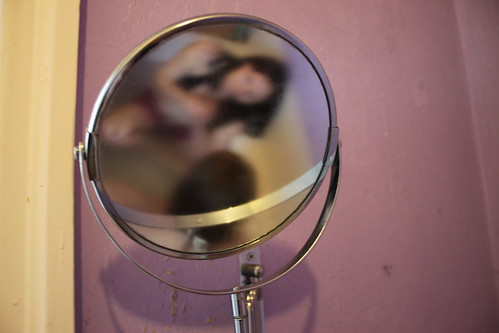 Photo taken 08/02/2013 by Jozey Wade
Photo taken 08/02/2013 by Jozey Wade
I would be lying entirely if I said every aspect of this performance process has been enjoyable for me. It has been difficult. At times I’ve felt engaged and eager and at times it’s felt almost impossible. I think that is what has ended up making it such an important experience for me. It has opened doors, not just within the performance world, but also with regards to my own mentality. No performance I have ever done before has come close to affecting me in the way being in that bathroom has, and I could not be more glad that I pushed myself, and was pushed by Conan and my fellow performers, through the doubts and difficulties. The experience really taught me a great deal about trust, sharing and human interaction – as I hope it did for my audience members.


